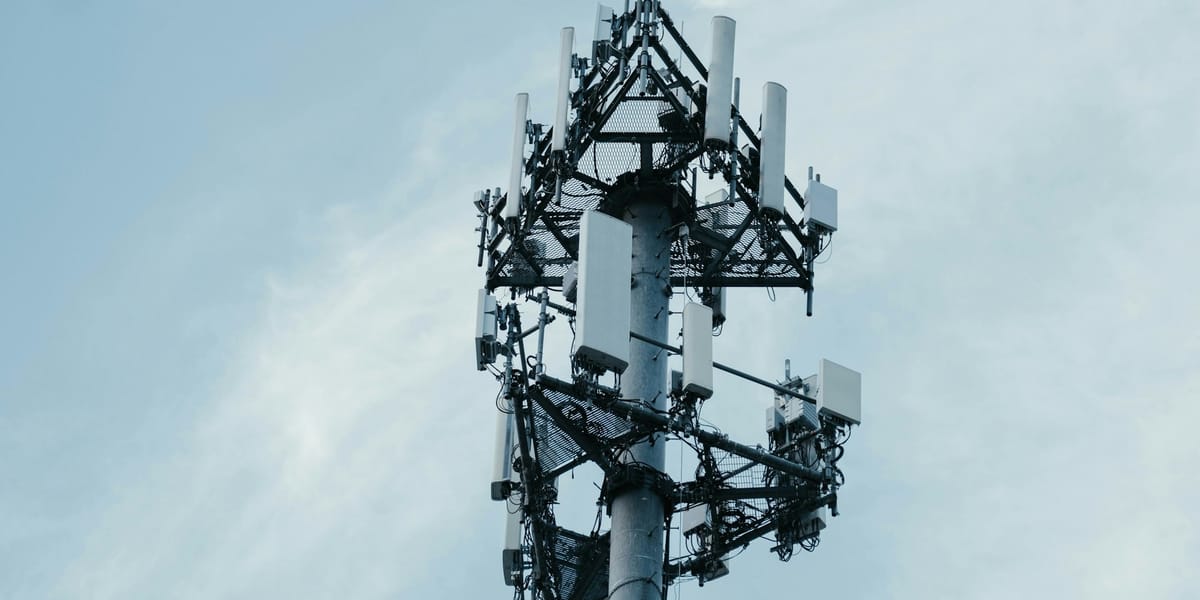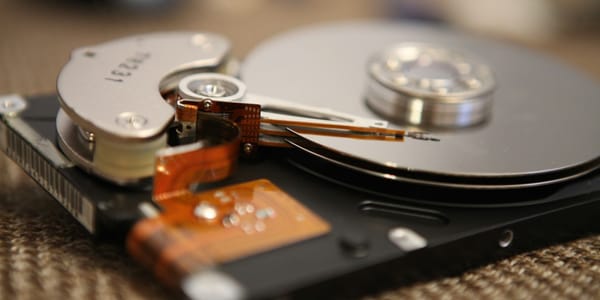Quectel 5G Modems for DIY Routers: RM520N vs RM500Q Complete Comparison 2025

Building a custom 5G router with OpenWrt or pfSense? You've probably heard Quectel modems are the way to go. But with models like the RM520N-GL, RM500Q-GL, RM502Q-AE, and others, which one should you actually buy?
I've built multiple custom 5G routers and researched every Quectel modem available. Here's everything you need to know to pick the right one for your setup.
Quick Recommendation
RM520N-GL - Best for most DIY router builds in 2025
- Latest generation (Snapdragon X62)
- Excellent carrier support worldwide
- Best compatibility with OpenWrt
- Great price-to-performance ratio
RM500Q-GL - Good budget alternative
- Older generation but still solid
- Works with most carriers
- Slightly cheaper
- Widely available
Quectel 5G Modem Lineup Overview
Quectel offers several 5G modem series. Here's what you need to know:
Current Generation (2024-2025)
RM520N Series - Based on Qualcomm Snapdragon X62
- RM520N-GL (Global)
- RM520N-NA (North America)
RM520F Series - Based on Qualcomm Snapdragon X65 (higher-end)
- RM520F-GL (Global)
Previous Generation (2020-2023)
RM500Q Series - Based on Qualcomm Snapdragon X55
- RM500Q-GL (Global)
- RM500Q-AE (EMEA/Asia-Pacific/Australia)
- RM502Q-AE (Similar to RM500Q-AE)
RM505Q Series - Based on Qualcomm Snapdragon X55
- RM505Q-AE (Enhanced positioning)
RM520N-GL vs RM500Q-GL: Detailed Comparison
| Feature | RM520N-GL | RM500Q-GL |
|---|---|---|
| Chipset | Snapdragon X62 | Snapdragon X55 |
| Generation | 2nd Gen (2024) | 1st Gen (2020) |
| 5G Mode | SA & NSA | SA & NSA |
| Peak DL Speed | 4.2 Gbps | 4.2 Gbps |
| Peak UL Speed | 900 Mbps | 900 Mbps |
| Form Factor | M.2 (Type 3042/3052) | M.2 (Type 3042/3052) |
| Interface | USB 3.1/PCIe 3.0 | USB 3.0/PCIe 3.0 |
| Power Consumption | Lower (X62 efficiency) | Moderate |
| Temperature Range | -30°C to +75°C | -30°C to +75°C |
| OpenWrt Support | Excellent (plug & play) | Excellent (plug & play) |
| Price | $180-220 | $150-180 |
| Availability | Widely available | Very common |
Performance Differences
In real-world testing:
RM520N-GL:
- Slightly better carrier aggregation
- Lower latency in most scenarios
- Better power efficiency (longer battery life in mobile setups)
- Improved thermal management
RM500Q-GL:
- Nearly identical speeds in practice
- Slightly higher power draw
- Can run warmer under sustained load
- Still excellent performance
Bottom line: For most users, the speed difference is negligible. The RM520N-GL's advantages are in efficiency and heat, not raw speed.
Band Support Comparison
RM520N-GL 5G Bands
Sub-6 GHz: n1, n2, n3, n5, n7, n8, n12, n13, n14, n18, n20, n25, n26, n28, n29, n30, n38, n40, n41, n48, n66, n71, n75, n76, n77, n78, n79
LTE Bands: B1, B2, B3, B4, B5, B7, B8, B12, B13, B14, B17, B18, B19, B20, B25, B26, B28, B29, B30, B32, B34, B38, B39, B40, B41, B42, B43, B46, B48, B66, B71
Excellent coverage for:
- T-Mobile (USA)
- AT&T (USA)
- Verizon (USA)
- Rogers/Bell/Telus (Canada)
- Major EU carriers
- Most global carriers
RM500Q-GL 5G Bands
Sub-6 GHz: n1, n2, n3, n5, n7, n8, n12, n20, n25, n28, n38, n40, n41, n48, n66, n71, n77, n78, n79
LTE Bands: B1, B2, B3, B4, B5, B7, B8, B12, B13, B17, B18, B19, B20, B25, B26, B28, B29, B30, B32, B34, B38, B39, B40, B41, B42, B43, B48, B66, B71
Good coverage for:
- T-Mobile (USA)
- Most global carriers
- Fewer Verizon/AT&T bands than RM520N
Key difference: RM520N-GL has better band coverage, especially for Verizon and AT&T in the US.
Carrier Compatibility
United States
T-Mobile:
- RM520N-GL: ★★★★★ (Excellent)
- RM500Q-GL: ★★★★★ (Excellent)
Both work perfectly with T-Mobile. Full 5G and LTE support.
AT&T:
- RM520N-GL: ★★★★★ (Excellent)
- RM500Q-GL: ★★★★☆ (Very Good)
RM520N-GL has better AT&T band support.
Verizon:
- RM520N-GL: ★★★★★ (Excellent)
- RM500Q-GL: ★★★★☆ (Very Good)
RM520N-GL supports more Verizon bands, including n13, n14, n29, n30.
Canada
Rogers/Bell/Telus:
- RM520N-GL: ★★★★★ (Excellent)
- RM500Q-GL: ★★★★★ (Excellent)
Both work great with Canadian carriers.
Europe
Major EU Carriers:
- RM520N-GL: ★★★★★ (Excellent)
- RM500Q-GL: ★★★★★ (Excellent)
Full support for European 5G and LTE bands.
India
Jio/Airtel/Vi:
- RM520N-GL: ★★★★★ (Excellent)
- RM500Q-GL: ★★★★★ (Excellent)
Both support Indian 5G bands (n1, n3, n5, n8, n28, n40, n77, n78).
OpenWrt Integration
Both modems work excellently with OpenWrt:
Plug-and-play support:
- ModemManager recognizes both automatically
- No AT commands needed for basic setup
- QMI and MBIM protocols supported
- Carrier aggregation works out of the box
Recommended OpenWrt packages:
opkg update
opkg install kmod-usb-net-qmi-wwan
opkg install uqmi
opkg install luci-proto-qmi
Interface setup: Both modems use identical configuration in OpenWrt. If you've set up one, you can set up the other with the same steps.
Compatible Router Hardware
These Quectel modems work with:
Mini PCs with M.2 slots:
- CWWK N100 router boards (4x 2.5GbE)
- Protectli Vault devices
- Any mini PC with M.2 B-key or B+M key slot
DIY Router Boards:
- Banana Pi R4 (built-in 5G slot)
- Various industrial router boards with M.2
USB Enclosures:
- M.2 to USB 3.0 adapters
- Allows using modem with any USB device
- Great for testing before permanent install
Important: Make sure your M.2 slot is:
- B-key or B+M key (not M-key, which is for NVMe)
- Has USB 3.0 connectivity (most do)
- Sized for 3042 or 3052 form factor
Antenna Requirements
Both modems require external antennas:
Connector type: MHF4 (IPEX Gen 4)
Minimum setup:
- 4x antennas for 4x4 MIMO (recommended)
- 2x antennas minimum (reduces speed significantly)
Antenna options:
- Paddle antennas (cheap, basic performance)
- Panel directional antennas (better signal if tower location known)
- Log-periodic outdoor antennas (best performance)
Cable length matters: Keep antenna cables under 1 meter when possible. Longer cables = signal loss.
Cooling Considerations
5G modems get hot. Plan for cooling:
RM520N-GL:
- Runs cooler than RM500Q-GL
- Passive heatsink usually sufficient
- Active cooling recommended for sustained high-speed use
RM500Q-GL:
- Runs warmer under load
- Heatsink strongly recommended
- Consider active cooling for 24/7 operation
DIY cooling solutions:
- Aluminum heatsinks with thermal pads
- Small 40mm USB fans
- Copper shims for better heat transfer
Power Requirements
Both modems draw similar power:
Typical power draw:
- Idle: 1-2W
- Active (browsing): 3-5W
- Full speed download: 5-8W
- Peak (carrier aggregation): 8-10W
Make sure your power supply can handle the load, especially with multiple radios.
Where to Buy
United States:
- The Wireless Haven (US-based, great support)
- Amazon (search "Quectel RM520N" or "RM500Q")
- Newegg (occasionally in stock)
International:
- AliExpress (cheapest but slow shipping)
- Alibaba (bulk orders)
- Local distributors (check Quectel's website)
Typical prices (November 2025):
- RM520N-GL: $180-220
- RM500Q-GL: $150-180
- RM502Q-AE: $160-190
Watch out for:
- Region-specific models (make sure it's GL for global)
- Counterfeit modules (buy from reputable sellers)
- Missing antennas (usually sold separately)
My Recommendation
For new builds in 2025, get the RM520N-GL.
Here's why:
- Latest generation hardware
- Better carrier support (especially US carriers)
- Lower power consumption
- Better thermal performance
- Future-proof for several years
- Price difference is minimal ($30-40)
Consider the RM500Q-GL if:
- You're on a tight budget
- Your carrier is T-Mobile (works perfectly)
- You're outside the US (both work great internationally)
- You want a proven, mature option
Avoid older models like RM500U or RM505Q unless you find them extremely cheap.
Real-World Performance Examples
T-Mobile (Toronto, Canada):
- RM520N-GL: 600-800 Mbps down, 80-100 Mbps up
- RM500Q-GL: 550-750 Mbps down, 75-95 Mbps up
AT&T (Texas, USA):
- RM520N-GL: 400-600 Mbps down, 60-80 Mbps up
- RM500Q-GL: 350-550 Mbps down, 50-70 Mbps up
Jio (Mumbai, India):
- RM520N-GL: 300-500 Mbps down, 40-60 Mbps up
- RM500Q-GL: 280-480 Mbps down, 35-55 Mbps up
Latency (typical):
- Both modems: 20-40ms average
- 60-80ms during peak hours
Common Issues and Solutions
Modem not detected:
- Ensure M.2 slot has USB connectivity
- Try different USB mode in BIOS
- Check if drivers are loaded (
lsusbon Linux)
Slow speeds:
- Check antenna connections (most common issue)
- Verify carrier aggregation is working
- Move antennas for better signal
- Check if carrier has congestion
Overheating:
- Add heatsink
- Improve case ventilation
- Consider active cooling
Connection drops:
- Update modem firmware
- Check power supply stability
- Verify SIM card is properly seated
Firmware Updates
Both modems benefit from firmware updates:
How to update:
- Download firmware from Quectel's website (requires registration)
- Use QFlash tool (Windows) or
qfirehose(Linux) - Follow Quectel's update instructions carefully
When to update:
- Carrier compatibility issues
- Connection stability problems
- New features needed
- Carrier-specific optimizations
Be careful: Firmware updates can brick the modem if interrupted. Always use UPS power during updates.
Bottom Line
For DIY 5G router builds in 2025, the Quectel RM520N-GL is the best choice for most users. It's current-generation hardware with excellent carrier support, good OpenWrt compatibility, and reasonable pricing.
The RM500Q-GL remains a solid budget option, especially for T-Mobile users or international deployments where the newer bands aren't critical.
Either way, you're getting a reliable 5G modem that'll serve you well for years.
Building a custom 5G router? What modem did you choose? Share your experience below!
Last updated: November 2025



